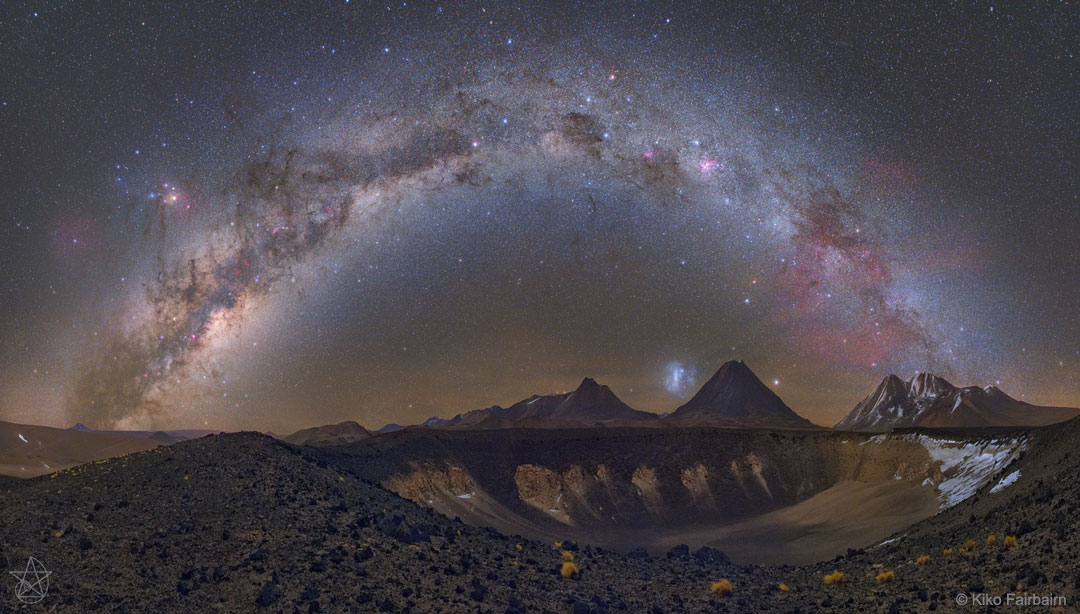more »
Launched 40 years ago, the spacecraft have sailed beyond the solar system, artifacts of a civilization that may be gone before they’re found.
via New York Times
There are advances being made almost daily in the disciplines required to make space and its contents accessible. This blog brings together a lot of that info, as it is reported, tracking the small steps into space that will make it just another place we carry out normal human economic, leisure and living activities.
Monday, 21 August 2017
A Total Solar Eclipse Leaves a Nation in Awe
more »
A total eclipse that crossed the sky from Oregon to South Carolina brought out throngs of spectators, who exulted in seeing the midday sky go briefly dark.
via New York Times
A total eclipse that crossed the sky from Oregon to South Carolina brought out throngs of spectators, who exulted in seeing the midday sky go briefly dark.
via New York Times
Missed the Solar Eclipse? You’ll Have Another Chance in 7 Years
more »
On April 8, 2024, a total solar eclipse will traverse the United States from Texas to Maine. After that, your next shot won’t be until 2045.
via New York Times
On April 8, 2024, a total solar eclipse will traverse the United States from Texas to Maine. After that, your next shot won’t be until 2045.
via New York Times
Analysis of a 'rusty' lunar rock suggests the moon's interior is dry
more »
The moon is likely very dry in its interior according to a new study analyzing fragments of the 'Rusty Rock,' a rock collected from the moon's surface during the Apollo 16 mission in 1972.
via Science Daily
Zazzle Space Exploration market place
The moon is likely very dry in its interior according to a new study analyzing fragments of the 'Rusty Rock,' a rock collected from the moon's surface during the Apollo 16 mission in 1972.
via Science Daily
Zazzle Space Exploration market place
No, Seriously, Don’t Look at the Eclipse Without Special Glasses
more »
Here’s how to ensure the eyeglasses you obtained will offer adequate protection before you look at the solar eclipse.
via New York Times
Here’s how to ensure the eyeglasses you obtained will offer adequate protection before you look at the solar eclipse.
via New York Times
Scientists create 'diamond rain' that forms in the interior of icy giant planets
more »
In an experiment designed to mimic the conditions deep inside the icy giant planets of our solar system, scientists were able to observe 'diamond rain' for the first time as it formed in high-pressure conditions. Extremely high pressure squeezes hydrogen and carbon found in the interior of these planets to form solid diamonds that sink slowly down further into the interior.
via Science Daily
Zazzle Space Exploration market place
In an experiment designed to mimic the conditions deep inside the icy giant planets of our solar system, scientists were able to observe 'diamond rain' for the first time as it formed in high-pressure conditions. Extremely high pressure squeezes hydrogen and carbon found in the interior of these planets to form solid diamonds that sink slowly down further into the interior.
via Science Daily
Zazzle Space Exploration market place
Milky Way over Chilean Volcanoes
more »

Sometimes, the sky mimics the ground. Taken in 2017 May from the Atacama Desert in Chile, the foreground of the featured image encompasses the dipping edge of the caldera of an extinct volcano. Poetically echoing the dip below is the arch of our Milky Way Galaxy above. Many famous icons dot this southern nighttime vista, including the center of our Milky Way Galaxy on the far left, the bright orange star Antares also on the left, the constellation of the Southern Cross near the top of the arch, and the red-glowing Gum Nebula on the far right. Just above the horizon and splitting two distant volcanic peaks near the image center is the Large Magellanic Cloud -- the largest satellite galaxy of the Milky Way.
Zazzle Space Gifts for young and old

Sometimes, the sky mimics the ground. Taken in 2017 May from the Atacama Desert in Chile, the foreground of the featured image encompasses the dipping edge of the caldera of an extinct volcano. Poetically echoing the dip below is the arch of our Milky Way Galaxy above. Many famous icons dot this southern nighttime vista, including the center of our Milky Way Galaxy on the far left, the bright orange star Antares also on the left, the constellation of the Southern Cross near the top of the arch, and the red-glowing Gum Nebula on the far right. Just above the horizon and splitting two distant volcanic peaks near the image center is the Large Magellanic Cloud -- the largest satellite galaxy of the Milky Way.
Zazzle Space Gifts for young and old
Before the eclipse
more »

The Sun as seen by SOHO and Proba-2 as astronomers prepare for today’s total solar eclipse
via ESA Space Science
http://www.esa.int/spaceinimages/Images/2017/08/The_Sun_21_August_2017
The Sun as seen by SOHO and Proba-2 as astronomers prepare for today’s total solar eclipse
via ESA Space Science
http://www.esa.int/spaceinimages/Images/2017/08/The_Sun_21_August_2017
Subscribe to:
Comments (Atom)